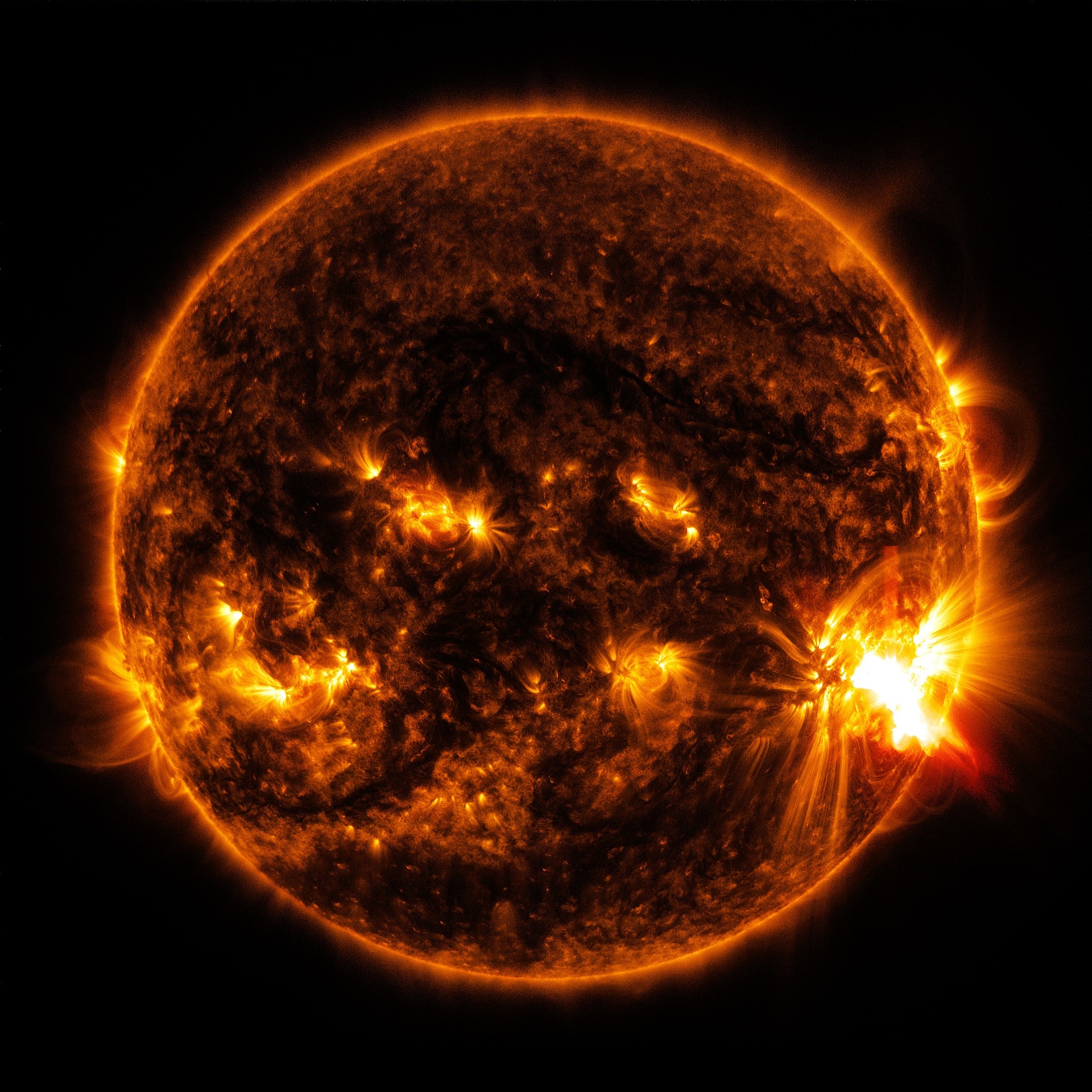Space weather as solar flares, solar radiation and Coronal Mass Ejections can severely disturb technical infrastructures such as radar, telecommunication, satellite-based communication, power grids and transport networks. The consequences can be damage to economics and fundamental supply from a regional to a global scale. As society relies more and more on sophisticated technology, the vulnerability to space weather increases. Especially, the complex interplay within and between different types of infrastructure is not understood. Thus, a system can also be endangered indirectly by depending on vulnerable infrastructure.
Also, the impact on financial systems is not widely considered yet. Especially, the loss of precise time measurement can harm the finances industry. There, time stamps are needed for financial transactions, trading (especially at high-speed), risk evaluation, instrumentation and forensics. Normally, accurate timing is provided by the Global Navigation Satellite System. In case of extreme weather, this system is not reliable. A historical example for this dependency is the Flash Crash on 6 May 2010. Possible emergency systems to maintain timing can be land-based connections to atomic clocks (e.g. by the National Physics Laboratory, UK) or the usage of holdover oscillators. If these are not available or used, financial transactions and trading need to be paused during extreme weather events.

The weather forecasting and national risk-assessment programmes in the US and some European countries already consider the impact of space weather. Forecasting precision and warning time are still limited. Institutions, such as the UK Met Office, offer alert systems and technical guidance.
The impact of space weather on financial systems still needs to be discussed in more detail by research and businesses. Main regards are an early and business specific warning mechanism, interdependencies with other infrastructure and resilience techniques. The findings should be implemented in governmental and business strategies. Governments, academia and industry need to coordinate their reaction to the risk of extreme space weather on an international basis. An example of such cooperation can be found in the UK.

Financial systems are an example of complex systems with many constituents and interactions between them. So, to analyse the impact of space weather on these systems a macroscopical/statistical treatment and a wide range of parameters are necessary. The influence of space weather events on single satellites should be rather straight forward. While the loss of timing and cascade effects within the financial system emerge from its network structure. This makes predictions on the influence of space weather further complicated. The precise and business specific technical guidance regarding space weather could become an interesting field of work for physicists and engineers. Close cooperation between regulatory bodies, industry and research is key in developing sufficient solutions for businesses and society as well as to provide a high data availability.
Hannes Vogel
This article aims to summarize Krausmann et al. [2014]: Space Weather and Financial Systems: Findings and Outlook. In: JRC Science and Research Reports, London, UK. It was written within the Arctic Science course of Umeå University.


